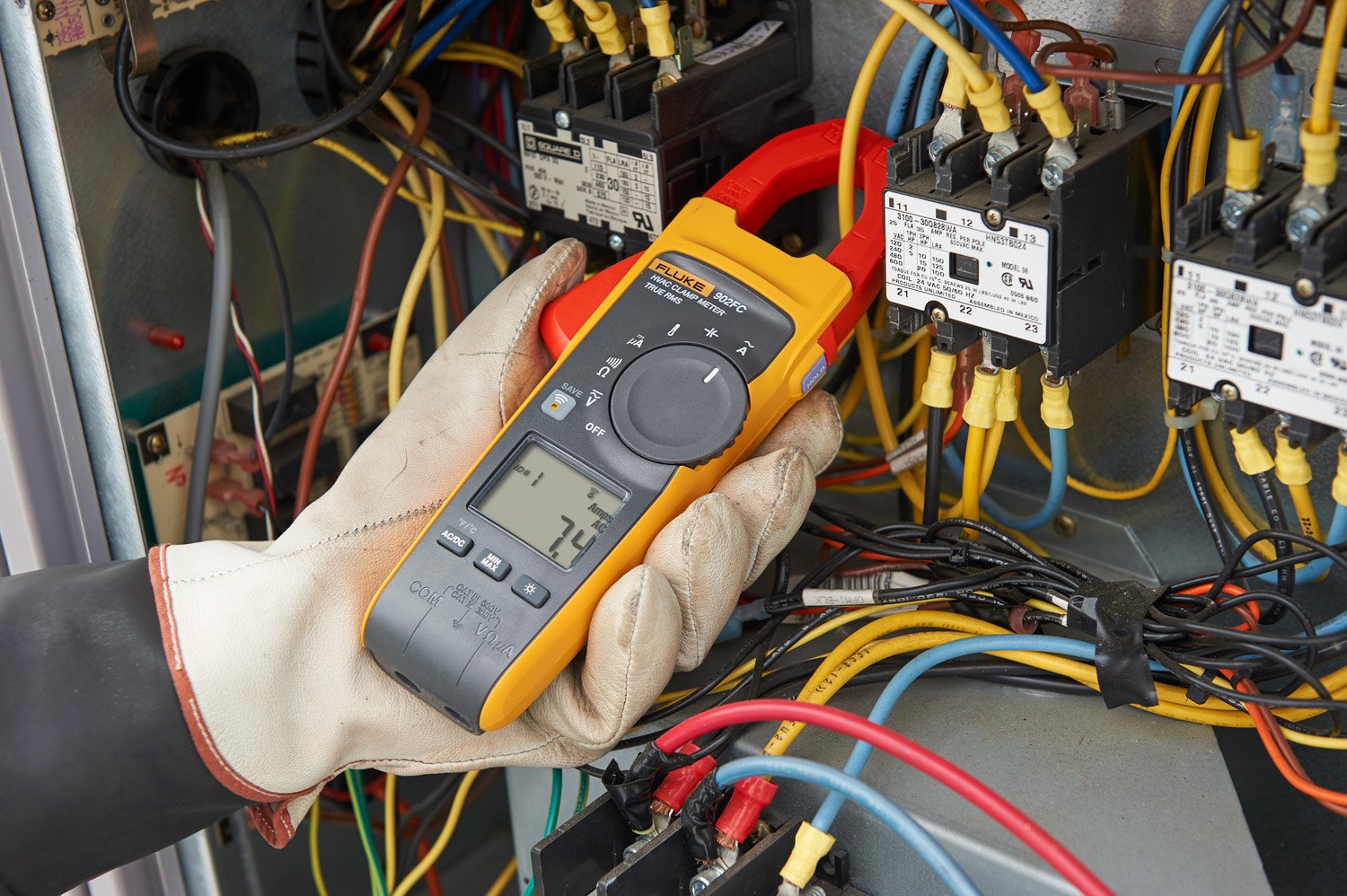The quest for energy savings drives innovations in highly efficient HVAC equipment. Much of the gains in efficiency have been made possible by variable speed motor drives and microprocessor controllers governing everything from blower fans and compressors to electronic expansion valves and thermostats. Although these electronic components help save energy, they present more complexity for HVAC techs.

To effectively maintain these systems, technicians typically need to be certified for each manufacturer’s product line. They also need to make sure they have true-RMS troubleshooting tools. The need for a true-RMS meter is driven by the fact that electronic controls produce nonlinear loads that draw current in short pulses. These pulses cause harmonic current to flow back into other parts of the power system and produce non-sinusoidal wave shapes. The result is overheating, malfunctions, and eventually failures throughout the system.
Get the true story
True-RMS test tools accurately measure AC current and voltage on both linear and nonlinear loads. Their internal circuitry calculates the heating value of any AC wave shape according to the “root-mean-square” (RMS) formula. In electrical terms, the AC RMS value is equivalent to the DC heating value of a particular voltage or current waveform.
For example, if a resistive heating element in an electric furnace is rated at 15 kW of heat at 240 V AC RMS, then applying 240 V DC instead of AC would produce the same amount of heat. From a measurement perspective, the RMS value is equal to .707 of the peak value of the sine waveform (VRMS). So, if an AC voltage source has a positive peak value of 165 V then the VRMS value equals 165 x .707, or 116.555 V.
Beyond true-RMS
When choosing a test tool for HVAC maintenance, in addition to looking for true-RMS circuitry, you should also look for the ability to measure microamps for testing pilot light sensors, resistance, AC current, AC/DC voltage, capacitance, and contact temperature.
The Fluke 902 FC True-RMS HVAC Clamp Meter measures all those parameters plus it adds wireless capabilities with Fluke Connect™. You can attach the meter at a test point and read the results on your smart phone outside the hazard zone. You can also create and share reports on the spot which saves time.
HVAC applications requiring true-RMS capabilities
Here are some common HVAC electrical measurements on new energy efficient HVAC equipment that require a true-RMS test tool.
- Electronic temperature sensors: Most of these sensors are thermistor temperature sensor types with an NTC-Negative Temperature Sensor response. This means that when the temperature goes down, the resistance goes up. When testing these sensors, you must compare your readings to the manufacturer’s specification for a known resistance reading at a specific temperature. The Fluke 902 FC can measure resistance in thermistors to 60 kΩ which saves having to carry a second meter.
- Pressure transducers: Pressure transducers deliver a DC voltage signal at a corresponding pressure. To test these transducers, measure the transducer’s DC voltage and compare it to the manufacturer’s specification for a known voltage at a given pressure.
- Current: For most newer indoor and outdoor high efficiency HVAC systems, current measurements are taken at the main power supply. Compressors and fans are controlled by variable speed controls, so you only need to check current on the supply side of each unit. Current readings should not exceed manufacturers full load ratings. Higher than normal current readings can indicate worn or improperly lubricated bearings.
- Voltage: Measuring voltage directly at the compressor is no longer possible, due to the types of electronically commutated motor (ECM) controllers used with today’s high efficiency systems. However, technicians should check the supply voltage to the outside unit and expect a reading of plus or minus 10% of the supply voltage.
The key takeaway is that any HVAC control system that contains semiconductors in the power supply or the controllers is a nonlinear load. A true-RMS test tool is critical to accurately measure and troubleshoot those components, so you can resolve problems quickly.